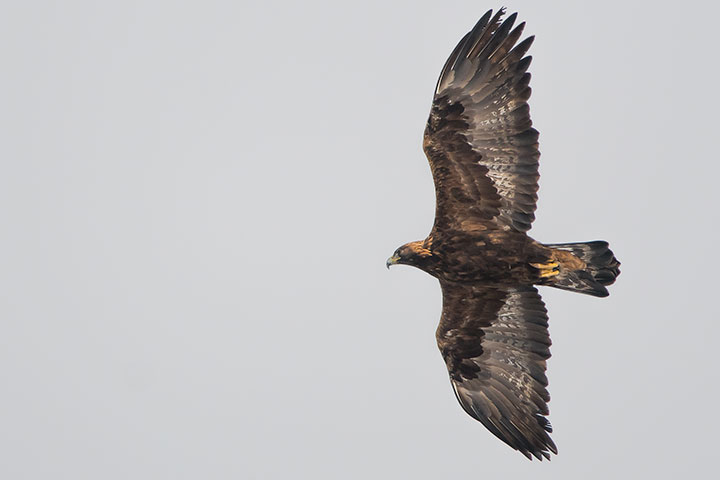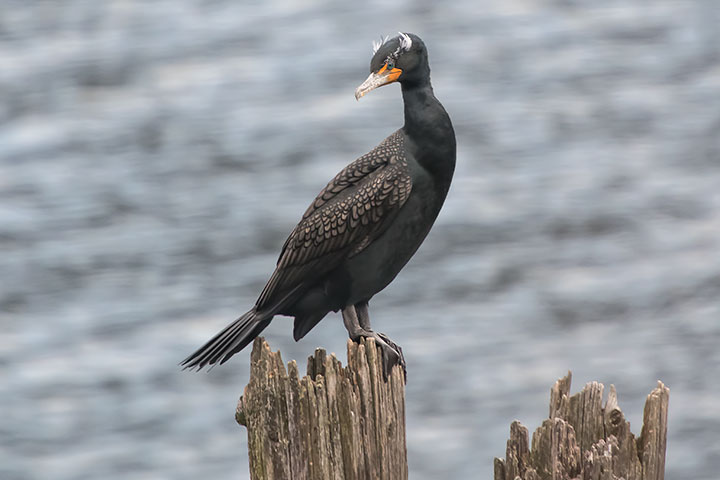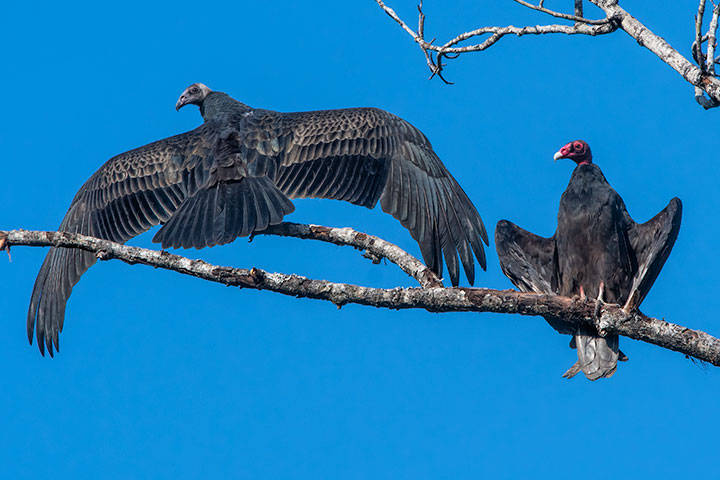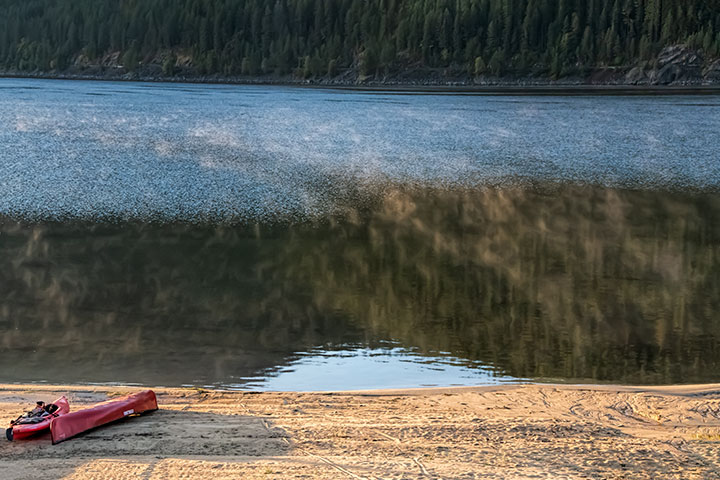The majority of my postings stand alone. Yet, sometimes following a posting, I continue to ponder it. This is a collection of five further ruminations made this last year.
Speeding hare, Jan. 17, 2018
I was struck by the speed of a snowshoe hare as it easily outpaced two dogs chasing it across a snow-covered field. What I did not appreciate at the time was how superb was this feat. Popular media will assure you that the fastest land mammal is the cheetah. This is true — when the cheetah’s top speed is measured in metres per second. However, biologists compare animals’ speeds in terms of their body lengths travelled per second. The cheetah has an impressive top speed of 23 body lengths per second. The hare trounces it by hitting a top speed of 37 body lengths per second. The hare besting the dogs was a truly impressive sight.

Golden Eagle, February 3, 2018
What was a Golden Eagle doing cruising the valley bottom? It normally prefers the uplands and leaves the valley bottoms to the Bald Eagle. My suspicion is that its presence was a result of the unusual large number of snowshoe hares that winter.

Cormo_rants, March 7, 2018
The Double-crested Cormorant is an interesting and uncommon bird around the Lake, so when the opportunity arises, I like to watch and photograph its behaviour. It was unexpected to discover that among some folk, the cormorant is demonized for everything from stealing fish, to destroying trees. There is a discussion of this at Why People Kill Cormorants. It seems that some people don’t feel complete until they know just what it is that they should hate.

Horaltic vultures, September 1, 2018
The classic picture of a vulture is one of it perched with its wings spread. It is clear why a bird has spread wings when flying, but why does it sometimes do so when perched? In the posting, I noted that a number of large birds will do this to: dry wings, raise body temperature after a cold night, bake parasites. Indeed, in the picture, below, the vulture on the left is having an early morning warming, while the one on the right is baking its parasites. However subsequent to this posting I realized I have also seen spread-wing perching as: a threatening posture to other birds, a way to shake water drops from the wings, and a way to cover food to avoid the avarice eyes of other birds.

Waltz of wind, water, & waves, September 20, 2018
The posting discussed a katabatic wind that flows off the beach and out over the Lake. Initially, the wind velocity at the water’s surface was below the cutoff speed for the production of waves, 23 cm/s, so, although the wind blows, the water just offshore is smooth. Then I wrote: “But, as the air moves out over the water, it accelerates and at the threshold speed of 23 cm/s, it begins to abruptly ruffle the water’s surface….” This comment was both correct and glib. After all: Why should the wind accelerate a bit offshore? First, the picture, then the discussion.

All winds are stronger a bit higher up but are slowed by friction at the surface. In the case of the gentle katabatic winds here, that higher up might be only 20 or 30 cm above the surface. The wind in the bottom centimetre flowing off the beach has clearly been slowed to below the wave cutoff speed. But as the air flows out over the warmer water, convection causes not only the steam fog, but also a mixing that brings the slightly stronger winds from higher up down to the surface. The surface winds now move faster than the cutoff for waves and so the water becomes disturbed.
This leads to another insight. The wind at the surface is slowed by friction by an amount that depends upon surface roughness. Change the underlying surface and the surface wind changes. (The velocity exchange through the wind profile is facilitated by a mixing from either convection or mechanical turbulence.)
Now consider a wind speed just above the cutoff speed for wave formation, so the water is ruffled. The rough surface now drags on the wind so that its speed then drops below the cutoff, and the water becomes smooth. The smooth water allows the wind speed to increase to above the cutoff and the water becomes ruffled again. And so it goes, back and forth.
I believe I have seen this oscillatory behaviour but have yet to get a compelling picture. Something to watch for.

Waltz of Wind, Water and Waves is quintessential Alistair – and will change the way I look out at our own Sky Pond once the ice removes this spring. Thanks for the gift!
Trevor, I rather think that your pond may be more suitable for such observations than my lake.
Two things learned today; a hare is faster than a cheetah and cormorants are demonized.
Thank you Alistair, for another wonderful year of beautiful photos and insightful comments.
Happy Hogmanay, Lang may yer Lum reek!
Marie, as you might expect, I know precisely what you said. Thank you.
…yet again my knowledge is increased by your photo postings & information…even though I’ll have to re-read until I understand the wind on water scientific explanation! You are my best educator of the natural world, many thanks…and may the new year be bright for you & yours, & the creatures of our world!
My favourite is the hare – photo and story. Amazing!
Thank you once again for those splendid pictures and all the interesting notes…especially those of the hare and her escape .